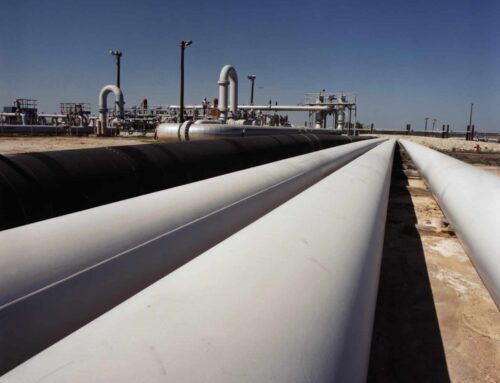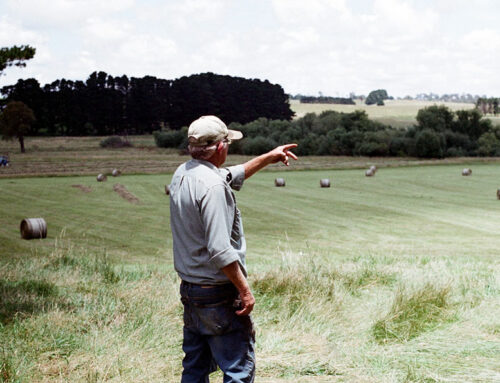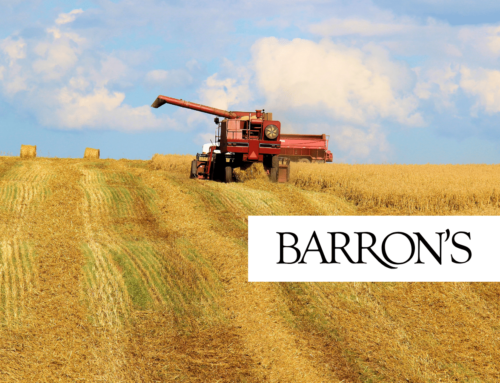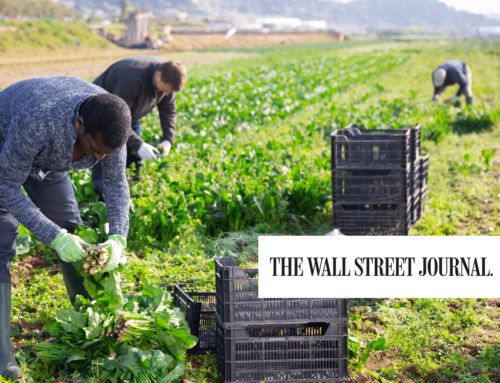The economic disruptions caused by the COVID-19 pandemic provide a sobering evaluation of how effective both individual and federal safety nets are for businesses involved in agriculture. Policymakers focused on the immediate priority of helping farming and ranching operations survive this current challenge need to ensure that today’s federal actions leave these businesses better equipped to face tomorrow’s potential disaster, be it a pandemic or the more likely weather, pest, or animal disease event. To do this, there needs to be increased understanding of how federal farm safety net and conservation programs have performed in helping producers manage risks. Future Congressional or administrative responses to COVID-19 must include concrete steps to increase public access to the treasure trove of program-specific performance data the USDA has across its sub agencies. For while ad hoc after-the-fact financial assistance may be warranted right now, it is not fiscally or politically sustainable. A truly cost-effective safety net enables farmers and ranchers to take steps to reduce their dependence on federal subsidies by increasing their individual resilience to the production and marketing challenges of raising crops or animals.
Preparation is the Best Emergency Response
Market disruptions caused by COVID-19 and the policy responses unleashed to restrain it are not affecting all farmers and ranchers equally. While USDA has identified 59 crops or livestock as experiencing at least a 5 percent drop in futures or wholesale price due to the pandemic, and thus eligible for direct financial assistance, this formula is not going to accurately identify all farmers and ranchers experiencing losses. Nor does it identify the severity of loss for an individual operation. USDA’s calculations don’t take into account price premiums for entire segments, like organics, and may severely understate income losses for operations that sell direct-to-consumers, or institutions, or grow crops not accounted for by USDA. Farm businesses that had marketed their 2020 crop (sold futures) before the steep drop in grain prices, were able to lock in higher prices than those who did not market. Even conventional producers of bulk commodities (corn, cotton, wheat, etc.) can realize significantly different prices, and incur vastly different costs, based on their geographic location, soil type, farm structure, debt load, and other factors.
Creating a one-size-fits-all federal program to effectively, and equitably, assist the entirety of the US agricultural sector is impossible. That’s why much of federal farm policy should not be geared at guaranteeing producers a Washington-determined appropriate price or adequate income. Instead federal policy should invest in tools, and remove barriers, allowing producers to position themselves to better manage economic disruptions.
Agricultural Conservation as a Pathway to Profitability
An increasing body of evidence shows that adopting conservation practices can make farmers and ranchers more profitable. The American Farmland Trust has produced eight in-depth studies identifying the net economic benefits operations resulting from investing in various soil health practices. These operations included conventional soy and corn farms, California almond growers, and operations in New York, as well as the Corn Belt. The Environmental Defense Fund conducted a similar analysis focused on four Pennsylvania dairy operations varying in size from 70 to 1,300 head and cultivated crop lands from 50 to 700 acres. While the specific benefits varied, the bottom line for all operations was that increased yields and reduced input costs from adoption of conservation practices resulted in a net increase in profitability.
The economic disruptions caused by COVID-19 pandemic especially show the value of these practices. While proper planning is unlikely to eliminate all losses, incorporating conservation practices that increase efficiency, reduce operator costs, and ultimately increase yields provide producers an economic advantage. When margins are thin and losses deep, operations that have improved their operating margins will fare better.
Removing Barriers and Increasing Access to Data
The USDA has valuable data on conservation practices and their effect on farm profitability. The Farm Service Agency, Risk Management Agency, Natural Resources Conservation Service, and the Economic Research Service all have large, long-running, data sets, thanks to decades of taxpayer-funded scientific research and administration of various safety net and conservation programs. What USDA does not have is a centralized system in place to share that data across agencies. It also lacks the technological infrastructure to enable academics, non-profits, and agribusinesses to access this data and integrate it with the vast amount of private sector data on farm operations.
Senators Thune (R-SD) and Klobuchar (D-MN) introduced the Agriculture Data Act in 2018 with the intent of increasing communication regarding how agricultural conservation increases profitability. The bill would have established a digital warehouse for all data compiled from USDA agencies regarding conservation practices. It also would have directed the Secretary of Agriculture to take steps to provide access and the data to university researchers, nonprofits, and others in order to integrate the data with non-USDA data. At the same time the bill protected the privacy of USDA program participants by limiting public data releases to aggregated data and prohibited the sale of individual producer data. The act was incorporated into the Senate version of the 2018 Farm Bill.
The final 2018 Farm Bill, the Agricultural Improvement Act of 2018, included a watered-down version of the Ag Data Act. Section 12618 directed USDA to identify and report to Congress the data sets on conservation that it has available and how USDA could make those available to researchers. The bill did not require USDA to make the data sets available. While not the same as the Agriculture Data Act, it is a great first step to help farmers and ranchers have successful businesses while also protecting the environment.
Investing in Resources that Build More Resilient Operations
Farming and ranching businesses face a significant amount of risk in their operations even in normal non-pandemic times. The goal of the agricultural safety net is to reduce that risk while enabling operations to increase profitability. While conservation practices are proven to increase long-term profitability, one of the biggest obstacles to increased adoption of conservation is the belief that “conservation” is separate from, and at times contradictory to, farming for profit.
In future COVID-19 assistance the USDA should implement, or Congress should mandate, the creation of a data warehouse and procedures for granting access to data relating to the impacts of conservation practices on farming and ranching profitability. By incorporating conservation performance data into a one-stop shop accessible to academics and other researchers, the USDA would help remove barriers to education, collaboration, and innovation while providing the resources necessary for farmers to thrive.
Conclusion
The COVID-19 pandemic has shown the shortcomings of the existing farm financial safety net. Increased reliance on after-the-fact subsidies distributed from Washington created one-size-fits-all programs are not in the interest of agriculture. The USDA and Congress should work together to leverage available taxpayer-funded program performance data to help identify how increased adoption of conservation can enable farmers and ranchers to increase their profitability. A truly cost-effective safety net is one that enables farmers and ranchers to take steps to reduce their dependence on federal subsidies by increasing their individual resilience to the production and marketing challenges of raising crops or animals.











Get Social